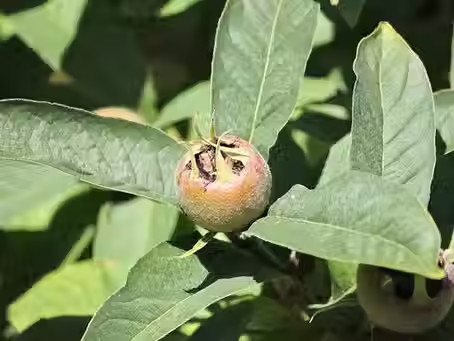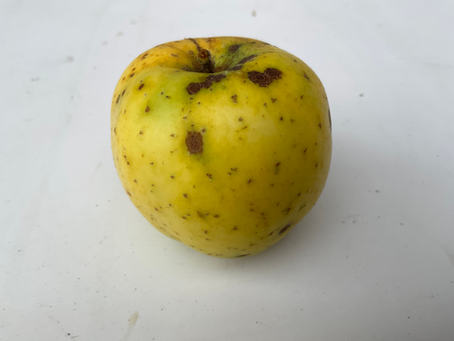top of page

pendragon orchard and vine
Turning Landscape into Legacy
Blog
Subscribe for writing that turns landscapes into legacies
Search


Sweet After the Freeze: Remembering Growing, and Eating the Medlar
Long after apples are gone and pears are stored away, the medlar still hangs—brown, frost-touched, and waiting. It’s a fruit that sweetens only after the cold, a reminder that not everything worth tasting comes in season.
Wolfy
Oct 134 min read


A Road Made of Roots: Notes on Wild Apples, Design, and Inheritance
I found the tree four years ago, growing out of a ditch outside Eastsound. A wild apple, balanced and bright, that led me into older work—of grafting, inheritance, and the quiet restoration that real design requires.
Wolfy
Oct 84 min read


A Strawberry Tree Grows in Seattle: Rediscovering an Ancient Evergreen — Top 10 Permaculture Species
The strawberry tree (Arbutus unedo) is an ancient evergreen too often overlooked in the Pacific Northwest. While other trees retreat into winter, it carries blossoms and ripening fruit side by side, offering color, nectar, and sustenance when little else remains. Once woven into Roman myth and Mediterranean culture, today it survives mostly as an ornamental—yet its resilience, drought tolerance, and quiet gifts make it a tree worth reclaiming for our landscapes.
Wolfy
Sep 305 min read


Growing Olives in the Pacific Northwest: History, Survival, Struggle, and the Long Bet.
Every olive carries history in its roots — Athens crowned with Athena’s gift, Noah reading the branch as landfall, empires rising and falling while the trees still bore fruit. To plant one here is to graft that long memory into Northwest soil, a wager that what endured for millennia might endure again.
Wolfy
Sep 178 min read


Growing Figs in the Pacific Northwest: A Practical Guide for Growers
Figs aren’t just for the Mediterranean. In the Pacific Northwest, a handful of hardy cultivars thrive with the right microclimate and pruning. Learn which varieties deliver, how to favor breba crops over late-ripening duds, and why now is the best time to experiment with figs in Cascadia.
Wolfy
Sep 85 min read


Seriously. Stop Hard Pruning Your Fruit Trees in Winter
Pruning is not conquest. It’s a negotiation with biology. It should be a conversation across seasons. And the blade should be an instrument of guidance — never of amputation . Every winter the cycle repeats: trees pruned down to stubs, their silhouettes reduced to skeletons against the sky. Owners look on, wincing but resigned, convinced this is what stewardship demands. They’ve been told it’s gospel. They’ve been sold on myth. But in summer the truth appears. Instead of fru
Wolfy
Aug 174 min read


Why Your Landscapers May Be Killing Your Trees
Landscape design notes from the cutting edge of Orcas Island Out here in the maritime Northwest, where moss grows on the north side of everything and trees carry the hush of old rain, you learn to watch the land closely. You learn that life and death are quiet things. They don’t come with warning signs or flashing lights. Sometimes they come with a pair of dirty pruning shears. Likely apple anthracnose. Since there are no other trees around, we suspect dirty pruning shears. O
Wolfy
Jul 112 min read


Less Sugar, More Soul: Making Maple Syrup at Home in the Pacific Northwest
Learn how to tap a bigleaf maple and make your own Pacific Northwest syrup. A field guide from Pendragon Orchard & Vine—part adventure, part craft, and all patience—turning rain, pressure, and fire into sweetness.
Wolfy
Dec 20, 20198 min read


Permaculture Gardening and Landscaping How To Avoid Panic Planting
So, you got excited and bought more bare root trees than you know what to do with. Been there. The story continues... You grab your shovel and look for a place to plant them all. Suddenly, you come to your senses; then you panic looking at all those trees awaiting your decision. What usually happens next is the "panic planting" with the whisper: "I'll move them later." Well, that needn't happen. You can buy plenty of time to make good decisions by "heeling-in" your trees. The
Wolfy
Mar 21, 20191 min read


Permaculture Gardening and Landscaping: Apple Pollination Basics
Just a few critical points when selecting apple trees for your yard or micro-orchard. First, most apples don't self pollinate; so, you need a pollinating partner; or, let's call it a "pollinating scheme". In your pollinating scheme, and, to keep this example simple, let's say you have two trees in your scheme. Those two trees cannot be the same variety, like two Shogun Fujis; they need to be different varieties. Now, your pollinators need to have flowers in bloom for each two
Wolfy
Mar 21, 20191 min read
bottom of page